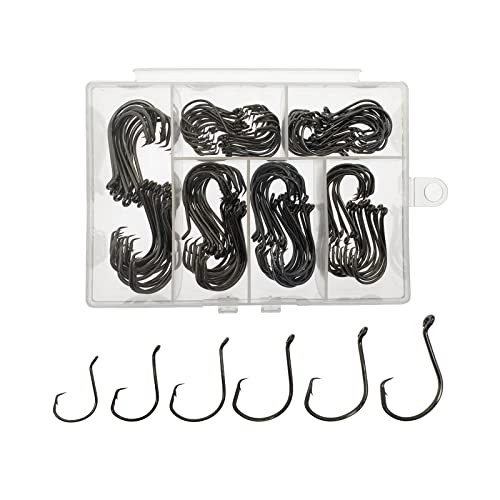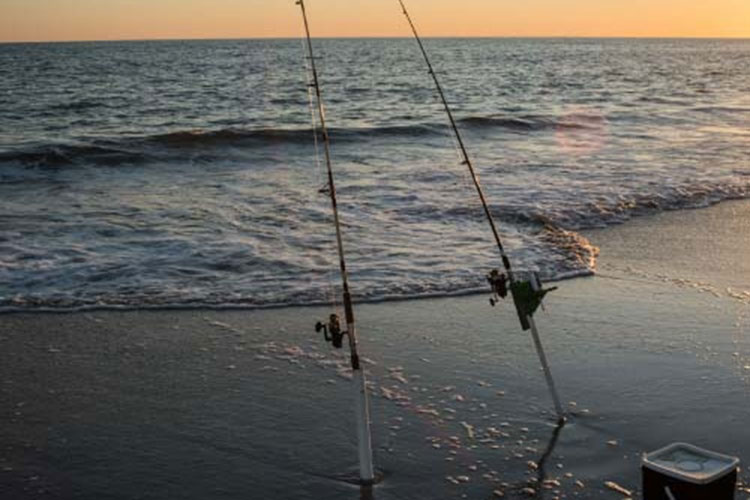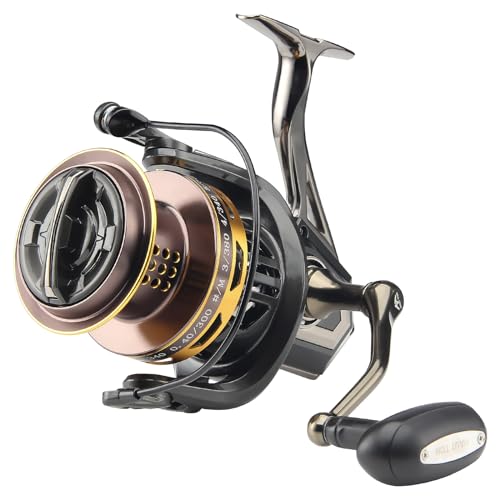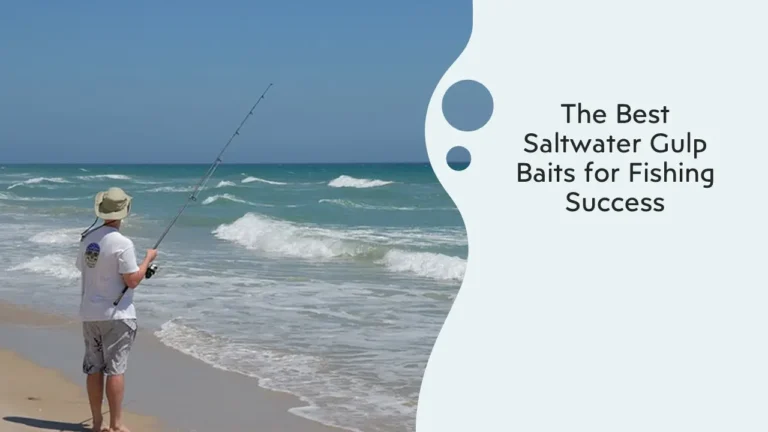Surf fishing and pier fishing differ in location and fishing techniques used. In surf fishing, anglers cast their lines from the shoreline into the waves, relying on the movement of the ocean to attract fish.
On the other hand, pier fishing involves fishing from a raised structure extending into the water, providing anglers with access to deeper areas and potentially larger fish. While surf fishing offers the freedom of mobility and the excitement of battling fish in the water, pier fishing provides a stable platform and greater convenience.
Both types of fishing have their advantages and appeal to different preferences and fishing goals. Ultimately, whether you choose surf fishing or pier fishing depends on your personal fishing style and the specific location you’re fishing in.
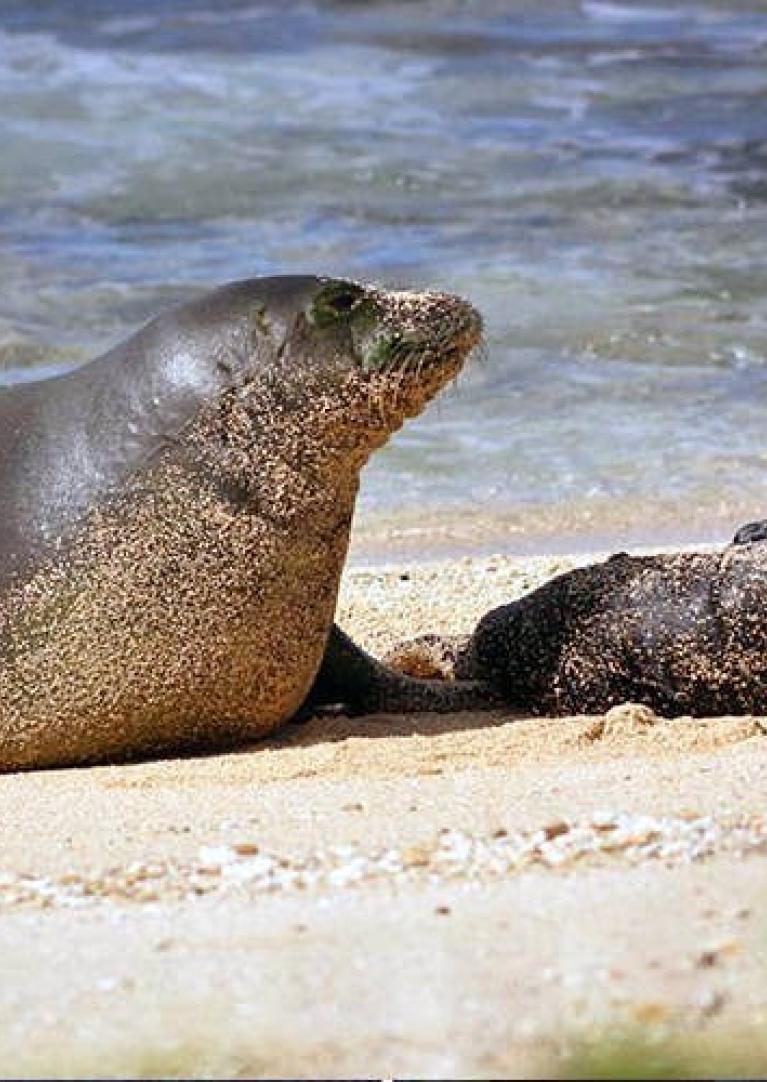
Credit: www.turtlebayresort.com
Understanding The Basics Of Surf Fishing And Pier Fishing
Surf Fishing: The Art Of Casting From The Shoreline
Surf fishing is an exhilarating activity that allows anglers to cast their lines directly from the shoreline. With the sound of crashing waves as the backdrop, this technique offers a unique and rewarding experience for fishing enthusiasts. Understanding the basics of surf fishing is crucial for a successful outing.
Here are the key points to consider:
- Choosing the right location: Selecting the ideal spot along the shoreline is essential for a fruitful surf fishing adventure. Look for areas with rocky features, coral reefs, or sandbars, as they tend to attract a rich variety of marine life. Additionally, sandy beaches with gradual slopes are preferable, as they offer easier access to deeper waters.
- Tackling the waves: Fishing in the surf requires dealing with the constant motion of the waves. It is important to be prepared and equipped with appropriate gear to withstand the force of the waves. Wearing a sturdy wetsuit or waterproof clothing, along with water shoes or boots, can help anglers maintain stability and protect themselves from potential hazards.
- Choosing the right gear: When it comes to surf fishing, selecting the right gear is key. Longer fishing rods, ranging from 9 to 12 feet, provide the necessary casting distance to reach deeper waters. Spinning reels are commonly favored due to their easy handling and versatility. Heavier tackle is often required to combat the waves and ensure greater casting accuracy.
- Bait and lures: The choice of bait and lures will depend on the target species, prevailing conditions, and personal preference. Natural baits such as shrimp, sand fleas, or squid are commonly used for surf fishing. Artificial lures, such as spoons, jigs, or soft plastics, can also be effective in enticing fish from the shoreline.
- Timing and tides: Timing your surf fishing adventure around the tides can greatly improve your chances of success. Many species of fish are more active during certain tidal movements. Researching the tides in advance and planning your fishing excursion accordingly can yield better results.
Pier Fishing: The Technique Of Angling From A Designated Structure
Pier fishing is a popular angling method that involves casting from a designated structure extending into the water. Whether it’s a wooden pier, jetty, or dock, this technique offers a unique perspective and access to deeper waters. To better understand the basics of pier fishing, consider the following key points:
- Selecting the right pier: Choosing the appropriate pier is crucial for a productive fishing experience. Look for piers located in areas known for abundant fish populations. Additionally, consider piers with a variety of structural features, such as pilings or lights, as they often attract fish seeking shelter or food.
- Observe and locate: Take the time to observe the pier before casting your line. Look for signs of baitfish, feeding activity, or interested anglers in certain spots. These indicators can provide insights into where fish are likely to be congregating, increasing your chances of a successful catch.
- Gear and equipment: When pier fishing, anglers commonly opt for slightly shorter rods compared to those used in surf fishing. A rod between 7 and 9 feet in length provides better maneuverability and control in the confined space of a pier. Spinning reels are still the preferred choice for their versatility, ease of use, and better line management.
- Choosing bait and rigs: Determining the type of bait and rig to use largely depends on the species you’re targeting. Natural baits such as shrimp, crab, or squid are popular choices for pier fishing. Various rigs, including bottom rigs, fishfinder rigs, or float rigs, can be employed to present the bait effectively and attract the attention of hungry fish.
- Be mindful of regulations: Before embarking on a pier fishing adventure, familiarize yourself with local fishing regulations. Some piers may have specific rules and restrictions in place to conserve fish populations and ensure a balanced ecosystem. Knowing these regulations will help you make informed decisions and avoid unnecessary penalties.
Both surf fishing and pier fishing offer unique angling experiences from different vantage points. Understanding the basics of each technique is crucial to maximize your chances of success. Keep in mind the key points discussed above, choose the appropriate gear, and adapt your strategies to the prevailing conditions.
Whether you’re casting from the shoreline or an elevated pier, be patient, observant, and open to learning new techniques to enhance your fishing skills.
Gear And Equipment: What You Need For Each Fishing Adventure
Surf Fishing Gear:
Surf fishing is an exciting adventure that requires specialized gear to tackle the challenges of casting from the shore. Whether you’re a beginner or a seasoned angler, having the right equipment is crucial for a successful day of surf fishing.
Here are the key gear and equipment you need:
- Rods and reels suitable for long casts: Surf fishing requires rods and reels that can handle the power needed to cast bait or lures beyond the breaking waves. Look for a medium to a heavy-duty spinning rod with a long casting distance. Match it with a reel with a large line capacity to handle the strong ocean currents.
- Tackle for different conditions: Surf fishing involves targeting various fish species in different conditions. Pack a variety of lures, hooks, and weights to accommodate changing environments. Artificial lures like spoons and plugs work well for aggressive fish, while circle hooks and sinkers are preferred for live bait presentations.
- Protective gear: Spending hours on the beach under the scorching sun requires protective gear. Invest in a comfortable pair of waders to keep you dry and protect against sharp rocks. Don’t forget to apply sunscreen generously and wear a hat to shield your face from harmful uv rays.
Pier Fishing Gear:
Pier fishing offers a unique angling experience where you can cast your line from a designated fishing structure. To maximize your chances of catching fish from the pier, here is the gear and equipment you need:
- Medium-length rods and reels for precise casting: Unlike surf fishing, pier fishing involves casting your line into a more confined area. Opt for a medium-length spinning rod and reel that provides the necessary accuracy while still allowing flexibility for fighting fish.
- Tackle for different target species: Different fish species gather around piers, so it’s essential to have the right tackle for the fish you’re targeting. Bring along jigs, live bait, and sabikis to entice a variety of species. Experiment with different colors and sizes to increase your chances of success.
- Required accessories for pier regulations: Piers often have their own specific regulations to ensure the safety of anglers and the marine ecosystem. Be prepared by having flags and nets to mark your area and comply with any pier regulations. Additionally, carry a bucket to hold your catch or store bait conveniently.
By equipping yourself with the appropriate gear and equipment for both surf fishing and pier fishing, you’ll be ready to embark on a thrilling fishing adventure. Remember to check local fishing regulations and acquire any necessary permits before heading out.
Happy fishing!
Location, Location, Location: Factors Influencing The Choice Of Fishing Method
Surf Fishing Considerations:
Surf fishing is a thrilling and popular method of angling that involves casting your line directly into the waves from the shoreline. When deciding whether or not to try surf fishing, there are a few key considerations to keep in mind.
- Ideal beach conditions: Look for beaches with a sloping, sandy bottom and rip currents. These conditions are preferred as they attract fish and provide an optimal fishing experience.
- Targeted fish species: Different fish species inhabit surf zones, so it’s important to research and understand the fish you’re trying to catch. Common species include striped bass, redfish, snook, and pompano.
- Accessibility and proximity: Choose a surf fishing location that is easily accessible and within a reasonable distance from your home or lodging. This will save you time and effort in reaching your preferred spot.
Pier Fishing Considerations:
Pier fishing is another popular angling technique that involves casting your line off a fishing pier or platform extending into the water. Before embarking on your pier fishing adventure, consider the following factors:
- Availability of fishing piers: Check the availability of fishing piers in your area. Some coastal regions have a variety of piers to choose from, while others may have limited options. Research local piers and their facilities to find the best one for your fishing preferences.
- Depth of water: The depth around the pier is a crucial element to consider. Piers situated in deeper water tend to attract a wider range of fish species. However, shallower depths can still offer great fishing opportunities for certain species.
- Target species: Different fish species are commonly caught from piers. Some popular catches include flounder, sheepshead, spanish mackerel, and tarpon. Ensure that the pier you choose aligns with the fish species you’re targeting.
Remember, whether you choose surf fishing or pier fishing, the key is to thoroughly research and understand the fishing conditions and target fish species in your chosen location. Plan accordingly, pack the right gear, and get ready for an exciting day of fishing.
Happy angling!
Techniques And Strategies: Mastering The Art Of Surf Fishing And Pier Fishing
Surf Fishing Vs. Pier Fishing – Differences
Surf fishing and pier fishing are two popular methods of recreational angling that offer their own unique set of challenges and rewards. Whether you prefer the thrill of battling fish amidst the crashing waves or the convenience of fishing from a stable platform, each technique requires specific strategies to reel in the big catch.
In this section, we will explore the techniques and strategies for mastering the art of both surf fishing and pier fishing.
Surf Fishing Techniques:
- Understanding the surf zone: The surf zone is comprised of various elements such as breakers, troughs, and sandbars. Learning to read these features is essential for locating fish. Breakers are the crashing waves near the shoreline, while troughs are the deeper channels between sandbars. By understanding these dynamics, anglers can position themselves in areas where fish are likely to congregate.
- Casting techniques for maximum distance and accuracy: Surf fishing often demands long-distance casts to reach the fish. Anglers should master the art of the overhead cast or the pendulum cast to achieve the desired distance. Additionally, paying attention to the wind direction and incorporating it into casting techniques can help increase accuracy.
- Reading the water conditions for fish activity: The movement and behavior of fish in the surf zone are greatly influenced by water conditions. Observing the color and clarity of the water, as well as the presence of foam or baitfish, can provide valuable insights. Turbid water may indicate recent fish activity, while clear water may suggest the need to adjust bait and lure selection.
Pier Fishing Techniques:
- Casting near structures and drop-off points: Piers offer anglers the advantage of fishing near structures such as pilings, rocks, or jetties. These structures provide shelter for baitfish and attract larger predatory fish. Casting near these structures and fishing the drop-offs can increase the chances of hooking a big catch. By adjusting the casting distance and angle, anglers can effectively target specific areas of interest.
- Working with tidal movements and water currents: Pier fishing requires understanding the impact of tide and currents on fish behavior. Different tides and current flows can create feeding opportunities, as fish are drawn to areas with increased water movement. Timing the fishing session to coincide with favorable tidal movements can significantly enhance the chances of success.
- Using live bait or artificial lures for attracting fish: The choice between live bait and artificial lures depends on the target species and fishing conditions. Live bait, such as shrimp or minnows, can prove irresistible to a wide range of fish species. Conversely, artificial lures, such as spoons or jigs, offer versatility and can mimic the appearance and movement of natural prey. Experimenting with different bait options can help determine which is most effective in attracting fish.
By mastering the techniques and strategies specific to surf fishing and pier fishing, anglers can optimize their chances of a successful outing. Understanding the surf zone, perfecting casting techniques, and reading water conditions are crucial for surf fishing, while casting near structures, working with tidal movements, and choosing bait strategically are key elements of pier fishing.
With practice and persistence, anglers can develop their skills in both methods and experience the thrill of reeling in their desired catch.
Catching The Big One: Targeted Species And Fishing Success
Surf Fishing:
Surf fishing is an exhilarating way to enjoy the ocean while trying to reel in the big one. With its unique challenges and rewards, surf fishing attracts anglers of all skill levels. Let’s delve into the key aspects of surf fishing, including the common species caught, the seasonality of certain fish, and tips for increasing catch rates.
- Common species caught from the surf:
- Striped bass: Known for their aggressive strikes and impressive size, striped bass are a highly sought-after catch in surf fishing. They are most commonly found in coastal areas and tend to gather in schools.
- Surfperch: These feisty fighters can be found close to shore, making them ideal targets for surf anglers. Surfperch come in various species, such as redtail, barred, and pile perch, and put up a thrilling fight when hooked.
- Seasonality of certain surf fish species:
- Striped bass: These fish migrate along the coastlines, and their presence can vary depending on the season. In the spring and fall, they are abundant, while in winter, they move to deeper waters.
- Surfperch: Different species of surfperch have different peak seasons. For example, barred surfperch are more active during the summer months, while redtail surfperch can be targeted year-round.
- Tips for increasing catch rates in surf fishing:
- Choose the right bait: Use bait that is known to attract the specific fish you are targeting. Live bait, such as sand crabs or shrimp, is often successful, but artificial lures can also be effective.
- Time your fishing: Different species of fish are more active during certain times of the day. Early morning and late afternoon tend to be productive periods for surf fishing.
- Pay attention to tides: Fishing during high or rising tides can increase your chances of success, as it brings smaller fish closer to the shore and attracts larger predators.
Pier Fishing:
Pier fishing offers its own unique experience, combining the convenience of a solid structure with the opportunity to catch a variety of fish species. Whether you are a seasoned angler or just starting out, fishing from a pier can be a rewarding endeavor.
Let’s explore the target fish species, the variation in pier fishing throughout the year, and techniques for maximizing your catches.
- Target fish species around piers:
- Sheepshead: These hard-fighting bottom-dwellers are commonly found near piers. Known for their black and white stripes and powerful jaws, sheepshead can be a challenge to hook but are highly prized for their delicious meat.
- Flounder: Found in coastal areas, flounder are flatfish that blend perfectly with their surroundings. They primarily inhabit sandy or muddy bottoms and are known for their distinctive side-swimming motion.
- Variation in pier fishing species throughout the year:
- Pier fishing offers a dynamic fishing experience with ever-changing seasonal opportunities. Certain species may become more abundant during specific times of the year. For example, during the summer, you might encounter more migratory fish like spanish mackerel, while colder months may bring in species such as black drum or redfish.
- Techniques for maximizing catches from fishing piers:
- Select the right rig: Different fish species may require different rigs and setups. For bottom-dwelling fish like sheepshead, using a carolina rig with a dropper loop can help keep the bait near the pier structure.
- Be mindful of depth: Adjust your line’s length according to the water depth around the pier. Fishing at different depths allows you to target fish in different parts of the water column.
- Change bait frequently: If you’re not getting bites, try switching up your bait. Some fish species have preferences for specific types of bait, so experimenting with different offerings can increase your chances of success.
Now that you have a better understanding of the targeted species and fishing success in both surf fishing and pier fishing, you can tailor your approach and techniques to optimize your chances of catching the big one. Happy fishing!
Challenges And Advantages: Pros And Cons Of Surf Fishing Vs. Pier Fishing
Surf Fishing Advantages:
Surf fishing has its own set of advantages that make it an appealing choice for many anglers. Here are some key points to consider:
- Cost-effective with minimal equipment requirements: One of the biggest advantages of surf fishing is its affordability. Unlike pier fishing, which often requires specialized gear and access fees, surf fishing can be done with minimal equipment. All you really need is a sturdy fishing rod and reel, some bait, and a pair of waders if you choose to venture deeper into the water.
- Flexibility to move along the shoreline: Surf fishing offers the advantage of flexibility. Unlike pier fishing, where you are limited to a fixed location, surf fishing allows you to explore different areas along the shoreline. You can move along the beach, following the tides and currents to find the best fishing spots.
- The thrill of battling fish in the surf: One of the most exciting aspects of surf fishing is the thrill of battling fish in the surf. Surf species like striped bass, redfish, and pompano are known for their strong fights and can provide an adrenaline rush for anglers. The challenge of reeling in a fish while battling the waves adds an extra level of excitement to the experience.
Surf Fishing Challenges:
While surf fishing comes with its advantages, there are also some challenges that anglers need to be aware of. Here are a few key points to consider:
- Weather and wave conditions impacting fishing opportunities: One of the biggest challenges of surf fishing is the unpredictable nature of weather and wave conditions. High winds, rough surf, and changing tides can impact fishing opportunities. It’s essential to check the weather forecast and pay close attention to water conditions before heading out to ensure a safe and successful fishing trip.
- Limited access to certain surf fishing areas: Unlike pier fishing, which provides easy access to deeper water, surf fishing might have limited access to certain areas. Some beaches may have specific fishing restrictions or protected areas, which can limit your options. It’s crucial to research the local regulations and find suitable surf fishing spots.
- Competition from other surf anglers: Surf fishing can get crowded, especially during peak seasons or popular fishing spots. The presence of other anglers in the same area can increase competition and reduce the chances of catching fish. It’s important to find less crowded spots or adjust your fishing strategy to increase your odds of success.
Pier Fishing Advantages:
Pier fishing offers its own unique advantages that make it a popular choice among anglers. Here are a few key points to consider:
- Stable fishing platform with better casting distance: Fishing from a pier provides a stable platform, making it easier to cast your line with accuracy and precision. Piers often offer better casting distance, allowing you to reach deeper waters where larger fish might be present. This advantage is especially beneficial for anglers targeting species like king mackerel or tarpon.
- Availability of amenities: Unlike surf fishing, piers often come equipped with amenities such as restrooms, shelters, and cleaning stations. These amenities provide convenience and comfort during long fishing sessions, making pier fishing a more enjoyable experience.
- Access to deeper water where larger fish could be present: Piers extend further into the water, giving anglers access to deeper waters where larger fish tend to congregate. This increases the chances of landing big catches and provides opportunities to target species that are not easily accessible from the shoreline.
Pier Fishing Challenges:
Despite its advantages, pier fishing also has its own set of challenges that anglers should be aware of. Here are some key points to consider:
- Crowded fishing spaces during peak times: Piers can get crowded, especially during peak fishing times or tourist seasons. The presence of other anglers can limit the available fishing space and create a more competitive environment. It’s important to plan your fishing trips accordingly or choose less crowded piers to maximize your fishing experience.
- Limited maneuverability due to pier layout: Fishing from a pier means dealing with limited maneuverability. The layout of the pier can restrict casting angles and movement along the platform. This can be a challenge when trying to target specific fishing spots or adjust your fishing strategy based on changing conditions.
- Dependency on pier regulations and opening hours: Unlike surf fishing, which can be done anytime, pier fishing is dependent on pier regulations and opening hours. Some piers may have specific rules, such as fishing licenses or restricted fishing times. It’s crucial to familiarize yourself with the pier’s regulations to avoid any legal complications or disappointments.
Both surf fishing and pier fishing have their own set of challenges and advantages. Your choice depends on your preference, fishing goals, and local conditions. Whether you enjoy the flexibility and thrill of battling fish in the surf or prefer the stability and amenities provided by piers, both options offer unique experiences for anglers to enjoy.
Conclusion: Choosing Your Fishing Adventure
Surf Fishing Vs. Pier Fishing – Differences
Surf fishing and pier fishing are two popular techniques that anglers employ to catch a variety of fish species. While both methods provide fantastic opportunities to reel in a big catch, they differ in several aspects. Factors such as personal preferences, fishing goals, and the desire for a diverse angling experience play a crucial role in choosing between surf fishing and pier fishing.
In this section, we will delve into these factors and help you determine which fishing adventure is best suited for you.
Factors To Consider When Deciding Between Surf Fishing And Pier Fishing:
- Location: Surf fishing allows you to explore a variety of coastal areas, while pier fishing is limited to specific structures. Consider whether you prefer the freedom of roaming along the shore or the stability of a fixed pier.
- Targeted species: Different fish species inhabit the surf and pier environments. Research the type of fish you want to catch and determine if they are more abundant in the surf or around piers. This knowledge will greatly impact your decision.
- Equipment requirements: Surf fishing often requires specialized gear, including long rods, heavy-duty reels, and sturdy tackle. On the other hand, pier fishing can be accomplished with more traditional fishing equipment. Consider your gear preferences and access to the necessary equipment when making your choice.
- Crowding and accessibility: Popular fishing spots can become crowded, particularly during peak times. While surf fishing offers more secluded locations, pier fishing can be more accessible and convenient, especially for those with physical limitations or who prefer fishing in more social settings.
- Tides and weather conditions: Surf fishing is influenced by tides and weather conditions, which can greatly affect your chances of success. Pier fishing, on the other hand, allows for a more consistent experience regardless of these factors. Take into account how comfortable you are with adapting to changing conditions.
Personal Preferences And Fishing Goals Shaping Your Choice:
- Solitude vs. camaraderie: If you enjoy the peacefulness of being alone amidst nature, surf fishing might be your ideal choice. On the contrary, if you prefer the company of fellow anglers and engaging in conversations while waiting for your next bite, pier fishing offers the opportunity for a more social experience.
- Skill level and challenge: Surf fishing can be more physically demanding, with the need to cast over longer distances and contend with waves. If you crave a challenge and the satisfaction of mastering difficult conditions, surf fishing might be the way to go. Conversely, pier fishing can be more accessible for beginners or those who prefer a more relaxed angling experience.
- Connection with the environment: Surf fishing allows you to experience the raw power of the ocean, embracing its unpredictable nature. On the other hand, pier fishing offers a chance to connect with structures built by human hands, creating a unique interaction between angler and environment. Consider which experience resonates more with your connection to nature.
The Possibility Of Enjoying Both Types Of Fishing For A Diverse Angling Experience:
Ultimately, choosing between surf fishing and pier fishing doesn’t have to be a one-and-done decision. Many anglers find joy in embracing both techniques, as each offers its own set of advantages and challenges. By alternating between surf fishing and pier fishing, you can enjoy a diverse angling experience and expand your skills as an angler.
Whether you choose to embark on the thrilling adventure of surf fishing or immerse yourself in the sociable atmosphere of pier fishing, what matters most is finding a style of fishing that aligns with your preferences and goals. Take the time to consider the factors outlined above, and don’t be afraid to explore both options for a truly fulfilling fishing journey.
Conclusion
The choice between surf fishing and pier fishing ultimately depends on personal preference and the desired fishing experience. Surf fishing offers the thrill of casting into the open sea, battling the waves, and the sense of freedom that comes with it.
On the other hand, pier fishing provides a more stable fishing platform, with easy access to deeper waters and a higher chance of catching certain species. Both methods have their unique advantages and challenges. Factors such as location, target species, equipment, and level of skill should be considered when deciding which type of fishing to pursue.
Whether it’s the solitude and connection with nature or the camaraderie and convenience of a pier, each style presents different opportunities for anglers to enjoy their time on the water. So, explore both surf and pier fishing, experiment with techniques, and find the approach that resonates with you.
Happy fishing!

